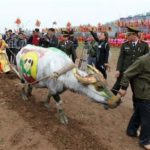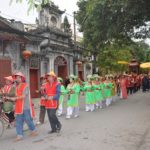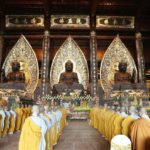You are lucky enough to witness the majestic Cham Towers while traveling from the South to the North of Vietnam and crossing Tuy Phuoc District in Binh Dinh Province at Ba Di Bridge. The towers are made of red bricks and are highlighted against the backdrop of the verdant mountains, making them a sight to behold.
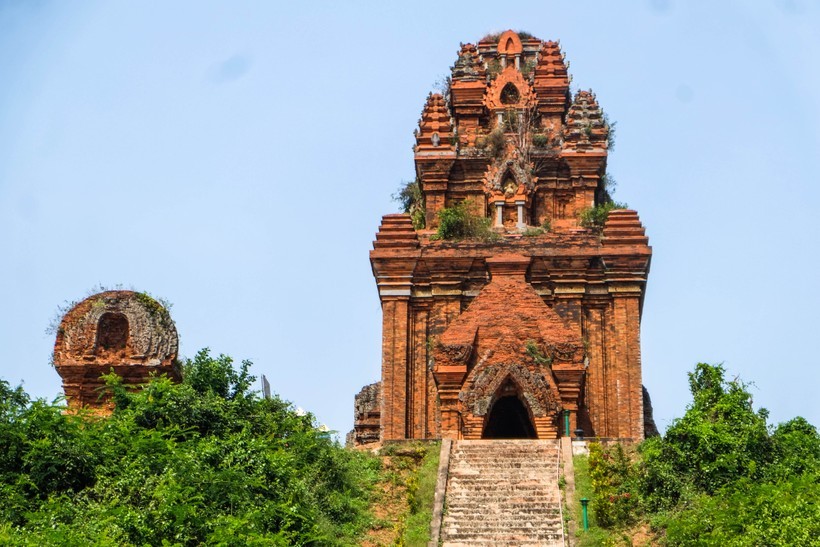 |
| The complex includes four towers built on a peak of a hill in Dai Loc Hamlet, Phuoc Hiep Commune, Tuy Phuoc District. Photo: Hoang Vinh |
In the late 11th and early 12th centuries, the tower was constructed atop a hill situated between two branches of the Kon River—Tan An and Ganh Bridge—just off National Highway 1A, 20km away from Quy Nhon City in Phuoc Hiep Commune, Tuy Phuoc.
This complex is comprised of four of the largest towers, including the main temple (Kala), the Gate Tower (Gopura), the Fire Tower (Kosagrha), and the Bia Tower (Posah). Formerly, this area functioned as the center of the three ancient Champa citadels of the Vijaya dynasty: Thi Nai Citadel, Cha Citadel, and Do Ban Citadel. Vijaya is known to have been a hub of economic activity, and Thi Nai Port was once a bustling commercial center.
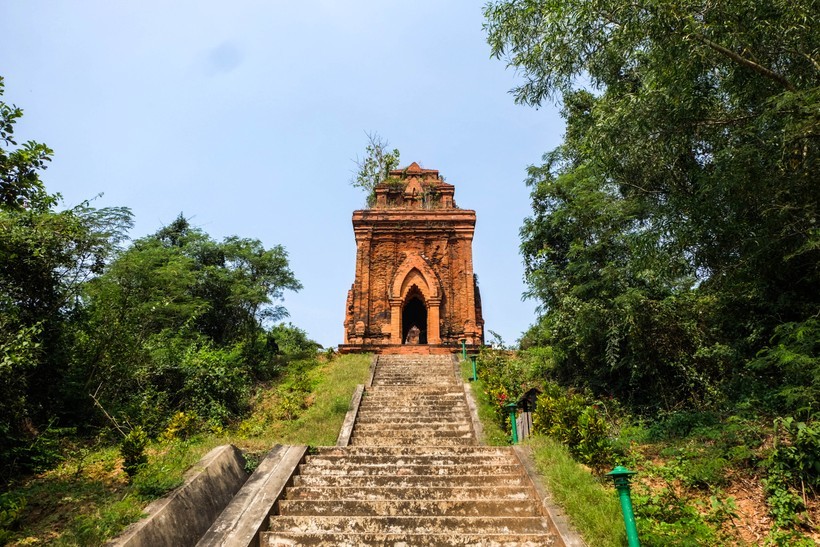 |
| The beautiful image of Gate Tower (Gopura). Photo: Hoang Vinh |
The French called it Tour d’Argent, which translates to “Silver Tower”, due to its intricate architecture. Consisting of four different towers, each with its own unique style and shade, the Tour d’Argent is a marvel of French engineering. After conducting extensive research on this complex structure, the French dubbed it the Tour d’Argent, which literally translates to “Silver Tower”. This impressive feat of engineering is comprised of four towers, each one distinctive in its own style and hue.
Banh It Tower is a unique architectural complex of unparalleled beauty and artistic value. Recognized by the Ministry of Culture and Information as a vestige of architectural and art in 1982, this cluster of towers is considered a masterpiece of Cham architectural art. It stands as a testament to the skill and creativity of those who constructed it, and continues to awe and inspire visitors from far and wide.
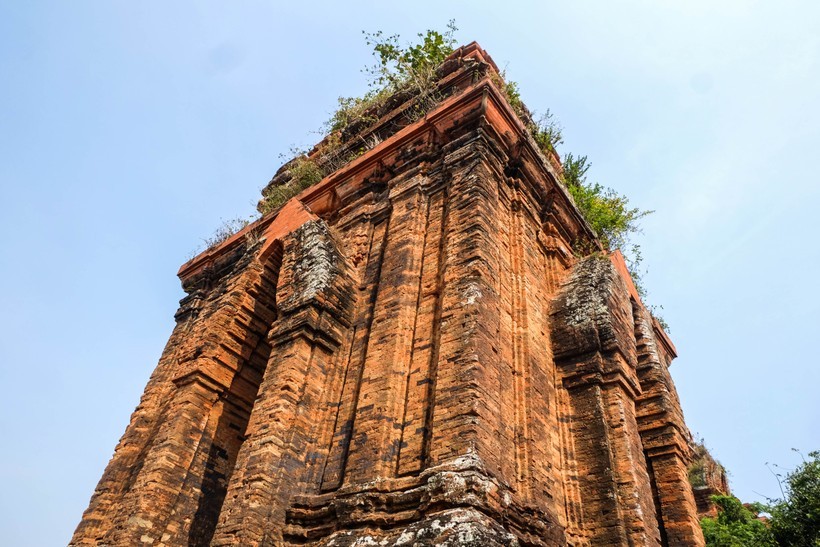 |
| The Bia Tower (Posah) is located 22m from the Gate Tower to the South and has a height of more than 10m. Photo: Hoang Vinh |
The Gopura Tower is located to the east and has the same shape and structure as the Kala main temple, yet is much smaller with fewer details. This brick structure stands 13 meters high and serves as a gateway leading to the temple and tower area. It has two connecting gates in the east-west direction and is positioned on the same axis as the central tower door at the top of the hill.
The main gate arch resembles a javelin, soaring high with many layers in a row. On the two sides, gates of the same size flank it. At the foot of the tower, there are concave longitudinal grooves, forming tall, elegant, and graceful columns.
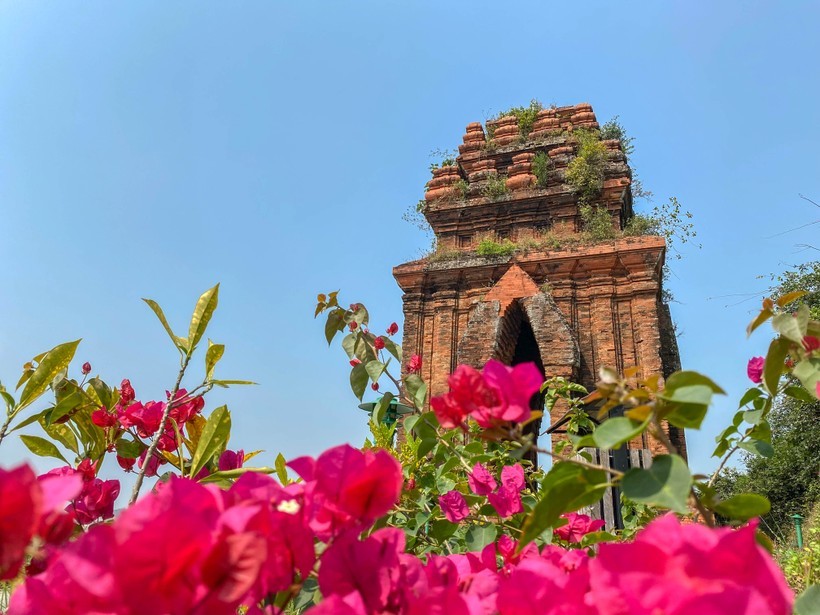 |
| Photo: Hoang Vinh |
The body of the tower is octagonal and is divided into three parts, each one with a different decorative style: the lower part is covered with floral and geometrical motifs; the central part has oblique and horizontal niches and the upper part is decorated with a series of lobes.
The tower foundation and body are separated by a laterite layer. The decorative motifs of the base are double pillars carved with stylized double petals symmetrically. The body of the tower is octagonal and is divided into three parts, each one with a different decorative style: the lower part is covered with floral and geometrical motifs; the central part has oblique and horizontal niches and the upper part is decorated with a series of lobes.
The Main Tower of the Banh It Towers stands at 22 meters in height and is adorned with the Binh Dinh sculptural style of the 12th century. Its walls feature small, embossed lines and the edges of the roofs boast leaf and flower-shaped motifs. False gates are also decorated with beautiful dancing senses.
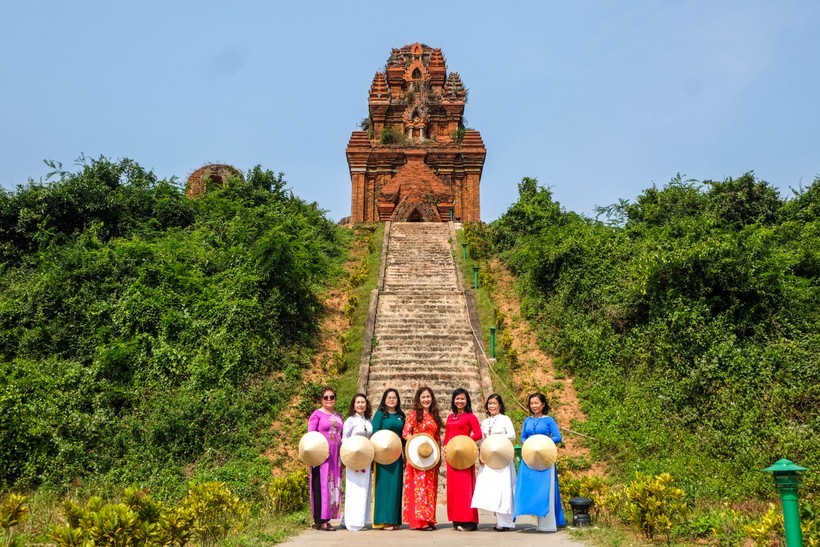 |
| The Main Tower (Kalan) located on the top of the hill is the largest and tallest tower of the 4 remaining ones in the relic. Photo: Hoang Vinh |
Carvings of dancing girls, valuable sculptures such as the stone statue of Siva, the statue of Ganesa, the statue of goddess Uma, and a bronze statue of Bhahma, were discovered here during the French domination period and subsequently brought to France. These artistic carvings and sculptures showcase the remarkable skill of Indian artisans during this period.
The Bia tower was built in 1856 and is the oldest surviving tower in the city of Posah.
The Bia Tower (Posah) is located approximately 22 meters south of the Gate Tower and stands at a towering height of over 10 meters. The four-sided structure has four gates: East, West, South and North, and was constructed in 1856, making it the oldest standing tower in the city of Posah.
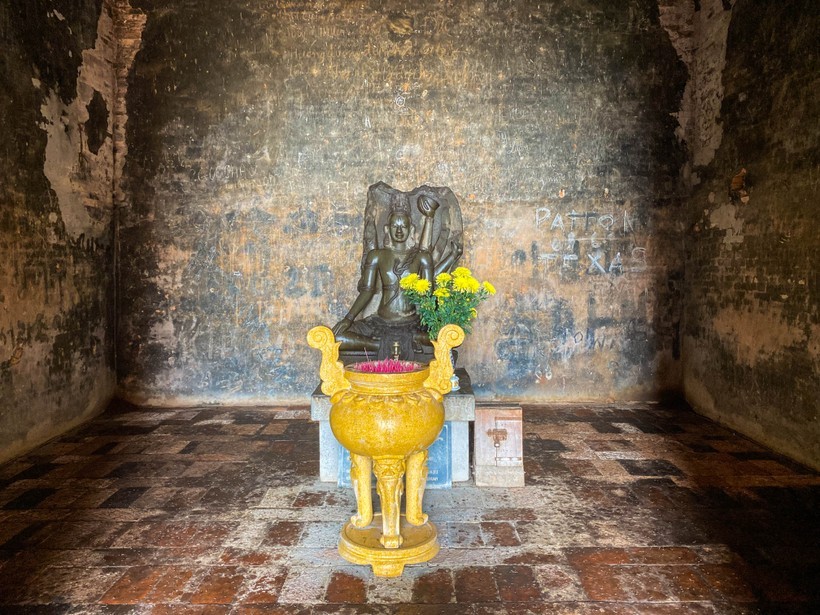 |
| The statue of Shiava inside the Main Tower. Photo: Hoang Vinh |
Like other Champa towers in Binh Dinh, the Main tower is comprised of four gates, with one main gate facing Southeast. The other three sides are false gates. Its shape is characterized by five vertical columns and double grooves, which make the wall strong and give it an elegant form.
To get to the towers, tourists must climb a winding brick road lined with trees. At the peak, which stands a few dozen meters above sea level, visitors can enjoy a breathtaking view of the surrounding area, with its scattered houses, rolling green farms, and meandering rivers and streams.
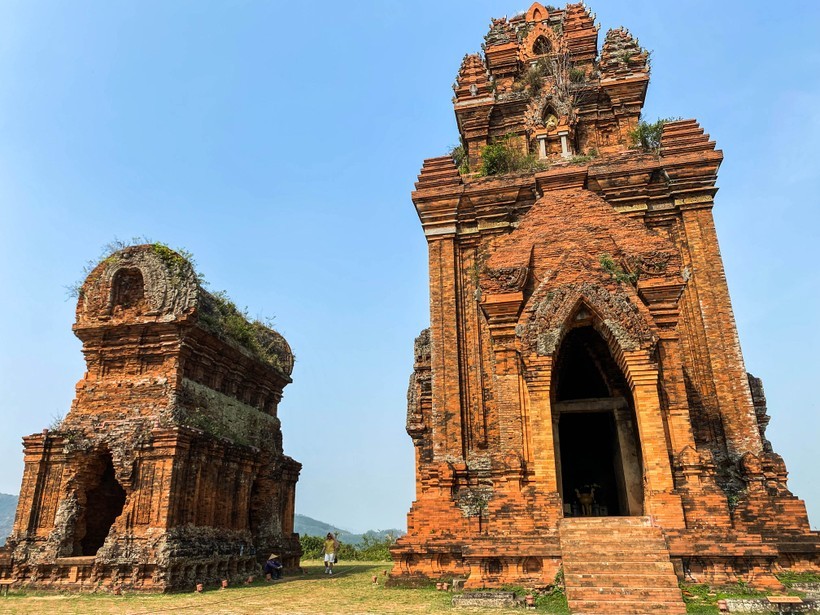 |
| The Main Tower (on the right) and Fire Tower (on the left). Photo: Hoang Vinh |
Nestled within the ancient walls of the Cham ruins, visitors can marvel at the stunning bas-reliefs – a testament to the craftsmanship of the Cham people. Surrounded by a serene stillness, the occasional chirping of birds and the flutter of bats echo through the main tower.
The name of the complex comes from the shape of the tallest tower, which has a peak that resembles a “banh it” (a three-cornered glutinous rice cake filled with green bean paste and meat).

